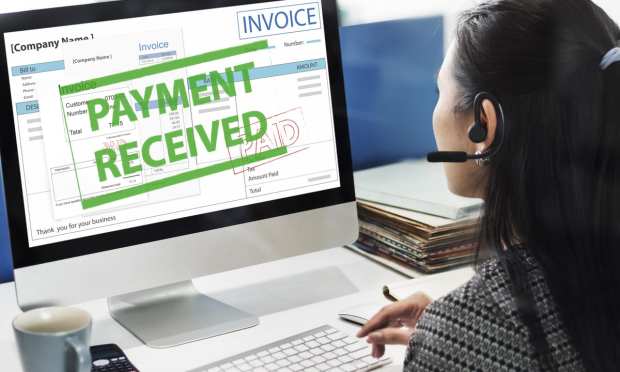Billtrust Raises 2021 Guidance As B2B Payments Digitization Accelerates

Accounts receivable automation technology provider Billtrust hit the ground running last March when it released its first quarterly and yearly earnings report as a public company. Founder and CEO Flint Lane and Chief Financial Officer Mark Shifke returned on Wednesday (May 12) to present Q1 2021 results, with the numbers reflecting the company’s continued pace of growth.
The B2B payments FinTech industry is well-positioned to capitalize on the ongoing digitization of the enterprise, and Billtrust is no exception. But merely offering an alternative to the paper check and relying on a market environment of electronics payment adoption is not enough to guarantee success in this space.
As Lane highlighted to investors during Wednesday’s earnings call, Billtrust’s results — which include raised expectations for full year 2021 earnings — can be traced back to a multi-pronged approached to B2B payments digitization.
Multiple Ways To Kill The Check
As an accounts receivable (AR) solution provider, Billtrust supports corporate customers’ migration away from the paper check by easing the friction of accepting electronic payment methods. Having access to technology and infrastructure that can support acceptance of cards or ACH is key to driving suppliers off of paper, but there is more than one way to ignite change in the ecosystem.
Flint pointed to Billtrust’s Managed eSolutions Program, for instance, which takes a human-level approach to collaborating with customers and helping them identify the most effective strategies to encourage their own business customers to adopt ePayments — a strategy the CEO described as “equally important” as digital platforms that can support those electronic transactions.
Industry collaboration also remains a key area of focus for the FinTech to drive the migration away from paper, particularly as a means to close the B2B payments loop by combining Billtrust’s AR technology with other players’ accounts payable offerings. The most recent effort in this strategy is Billtrust’s partnership with Bottomline Technologies, also announced Wednesday, which sees Billtrust’s Business Payments Network (BPN) integrate with Bottomline’s Paymode-X network of business payers, providing them with a broader ecosystem of card acceptance points and digital lockbox services.
A third approach to B2B payments digitization includes support for B2B payment choice, with Flint highlighting Billtrust’s move to introduce support for ACH and wire transactions earlier in the quarter as a key step forward in that effort. Not only must these payment methods be supported, he said, but FinTechs must also tackle the payment rail-specific points of friction they pose for suppliers.
“ACH and wire payments can actually be more difficult to handle” than card payments, Flint said. “Because the remittance information isn’t delivered with the payment, ACH and wire payments hit a customer’s bank account, and remittance information most often comes via email.”
Offering the ability to automatically marry the payment and its remittance details, and present that data to the vendor, is an instrumental component in enabling those businesses to embrace electronic payment acceptance.
Finally, a fourth avenue to driving B2B payments adoption has been to support those businesses that are still accepting paper checks. Indeed, while Billtrust’s Q1 data revealed a 146 percent year-over-year increase in total payment volume (TPV) driven by the addition of support for ACH and wire payments, as well as a 117 percent year-over-year increase in card volume on the BPN, Billtrust’s Mobile Deposit capture solution, which allows vendors to digitally deposit and capture data from checks, neared the $100 million mark less in Q1, less than one year since its initial rollout. Efforts to digitize workflows around the check can be a crucial component to easing the friction of migrating away from paper entirely.
Sunny Guidance Ahead
Flint opened Wednesday’s call with a reflection on the acceleration of B2B payments digitization, leading Billtrust’s Q1 stats to exceed his expectations, and supporting an optimistic outlook ahead.
The firm posted a 22.8 percent year-over-year increase in total revenue, hitting $41.9 million, while revenue from its software and payments operations grew more than 40 percent year-over-year to $25.7 million.
While the company is taking a multi-pronged, multi-rail approach to the market, CFO Shifke noted that card transactions remain the strongest driver TPV growth. As a PayFac, he said, the company’s ability to lower interchange rates on virtual card transactions via Level II and Level III processing continues to support card acceptance among suppliers.
Regardless of what payment method is driving revenue for the company, Billtrust expects a strong year ahead, upwardly-revising its full year revenue guidance to be between $160 million and $166 million.
As the company looks to accelerate its top-line growth, Shifke highlighted year-over-year increases in R&D expenses, signaling more innovations to come as the firm navigates new paths to drive B2B payments digitization and enjoys a rebound of subscription revenue from the impact of the coronavirus crisis.
“We continue to be incredibly excited about the opportunity ahead,” Shifke said.
